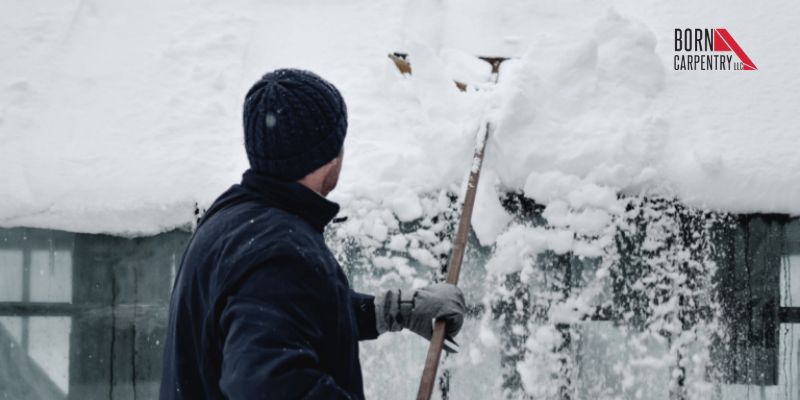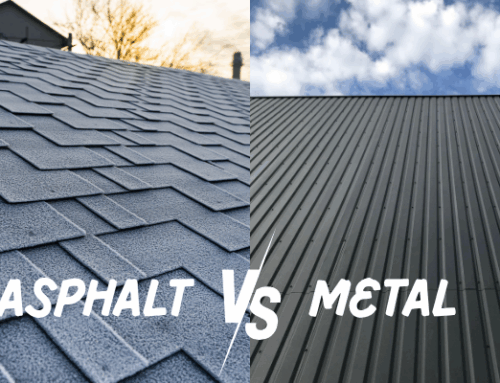The winter season brings with it snow, ice, and falling branches. Your home must be protected against these elements and the first line of defense is your roof. Due to its frequent exposure to elements, it is one of the costliest aspects of a home. However, you must endeavor to keep your roof clean and damage-free in the winter months.
Keeping Your Roof Clean and Damage-Free in The Winter Months: A Comprehensive Guide
Winter conditions can seriously affect your roof. You avoid costly repairs and save money when you ensure your roof is in good shape to withstand winter. Despite technological advancements in roofing materials, you must follow specific precautions to prevent any roof failures during the winter season.
1. Remove debris
When strong winds carry debris onto your roof, they have the potential to damage the granules covering the shingles. In more severe cases, the shingles may be dislodged. The accumulation of wet leaves can also create conditions for mold to thrive, while seeds can attract animals looking for shelter.
To prevent this from happening, ensure a trouble-free winter season for your roof by removing debris. This approach is essential in preventing the development of cracks in your roof, which could lead to leaks or the nesting of animals beneath your roof. In the end, it is an effective approach for preserving the integrity and longevity of your roof.
2. Prevent the accumulation of snow

The sight of accumulated snow might look attractive, but it can negatively affect your roof. As snow builds up, the burden on your roof increases which may lead to the failure of weaker areas. Moreover, the thawing and refreezing of snow can result in the development of ice dams, which can be expensive to address.
This cycle of freeze and melt is dangerous because, as water transforms into ice, it expands. As this happens, it exposes and exacerbates vulnerable cracks in your roofing structure. When attempting to remove snow from your roof, be cautious as it can be slippery and dangerous. If needed, you should seek professional assistance.
3. Trim overhanging branches
Your roof is more at risk during the winter season. The increased risk is the potential for these branches to succumb to the weight of snow, ice, or strong winds. Breakage, as a result, could lead to their subsequent impact on your roof, resulting in damage.
To safeguard your home from such risks, you must schedule the trimming of these overhanging branches before winter. By taking this step, you can alleviate concerns about the potential vulnerability of your roof and mitigate the associated risks.
4. Inspect your roof
Before the winter season sets in, it is recommended that you seek the help of a professional roofer for a thorough inspection. The evaluation of this serves as a preventive measure because it can identify any potential issues that may not be noticed. By doing so, you can make your roof stronger and mitigate the risk of experiencing roof-related problems during winter.
Furthermore, with careful roof inspection, a professional can detect issues ranging from minor wear and tear to more significant structural concerns. When these issues are noticed, they can then be addressed immediately. A quick resolution ensures the long-term durability and functionality of your roof.
5. Install ice and snow guards

In keeping your roof problem-free during the winter months, you must consider installing ice and snow guards. Snow guards will help in mitigating the abrupt and potentially hazardous shedding of substantial snow loads, which can pose a danger to individuals and cause property damage. These will help in maintaining the integrity of your roof structure.
By evenly distributing the weight of accumulated snow, they help prevent structural strain and the potential for roof damage as well. In regions prone to heavy snowfall, installing ice and snow guards is a step in ensuring the safety of your property and preserving the longevity and functionality of your roofing system.
6. Clear vents in the attic
During the winter season, ice has the potential to form in various areas. It can for in your vents, an area that helps in preventing moisture from infiltrating your attic. The presence of excess moisture in the attic can escalate during winter and cause leaks that pose a significant threat to your home.
Therefore, you must ensure the adequacy of ventilation and remain on the lookout against any existing leaks. This approach is essential in avoiding the need for costly repairs, as it safeguards your home’s structural integrity and helps maintain the condition of your roof. Proper attic ventilation and leak prevention measures serve as vital safeguards.
7. Ensure adequate insulation
In preparing for the winter season, incorporating or renovating insulation within your home is something you must consider. While it may not immediately appear directly connected to your roof, the presence of effective insulation between the interior living spaces and the roof has many benefits.
This insulation serves as a barrier against temperature fluctuations from both indoor and outdoor environments. By maintaining consistent temperature levels and preventing extreme variations, proper insulation helps prevent structural warping and potential damage. Therefore, adequate insulation plays an important role in preserving the integrity and longevity of your roofing system.
8. Review your homeowner’s insurance policy
Some winter-related damages may be inevitable. Flying objects or even tree branches can cause damage. For this reason, you should review your homeowner’s insurance policy, especially regarding winter-related issues. Some policies might stipulate specific prerequisites for routine maintenance and inspections.
It is important to adhere to these requirements for your coverage to be valid. By understanding and complying with these provisions, you secure your insurance benefits and ensure your home’s protection in the event of winter-related roof issues.
Conclusion
Winter roof preparation is vital to ensuring that your home’s durability is protected. By adhering to these guidelines and performing essential maintenance, you can reduce the risk of damage and costly repairs. Consult a professional roofer if needed.






